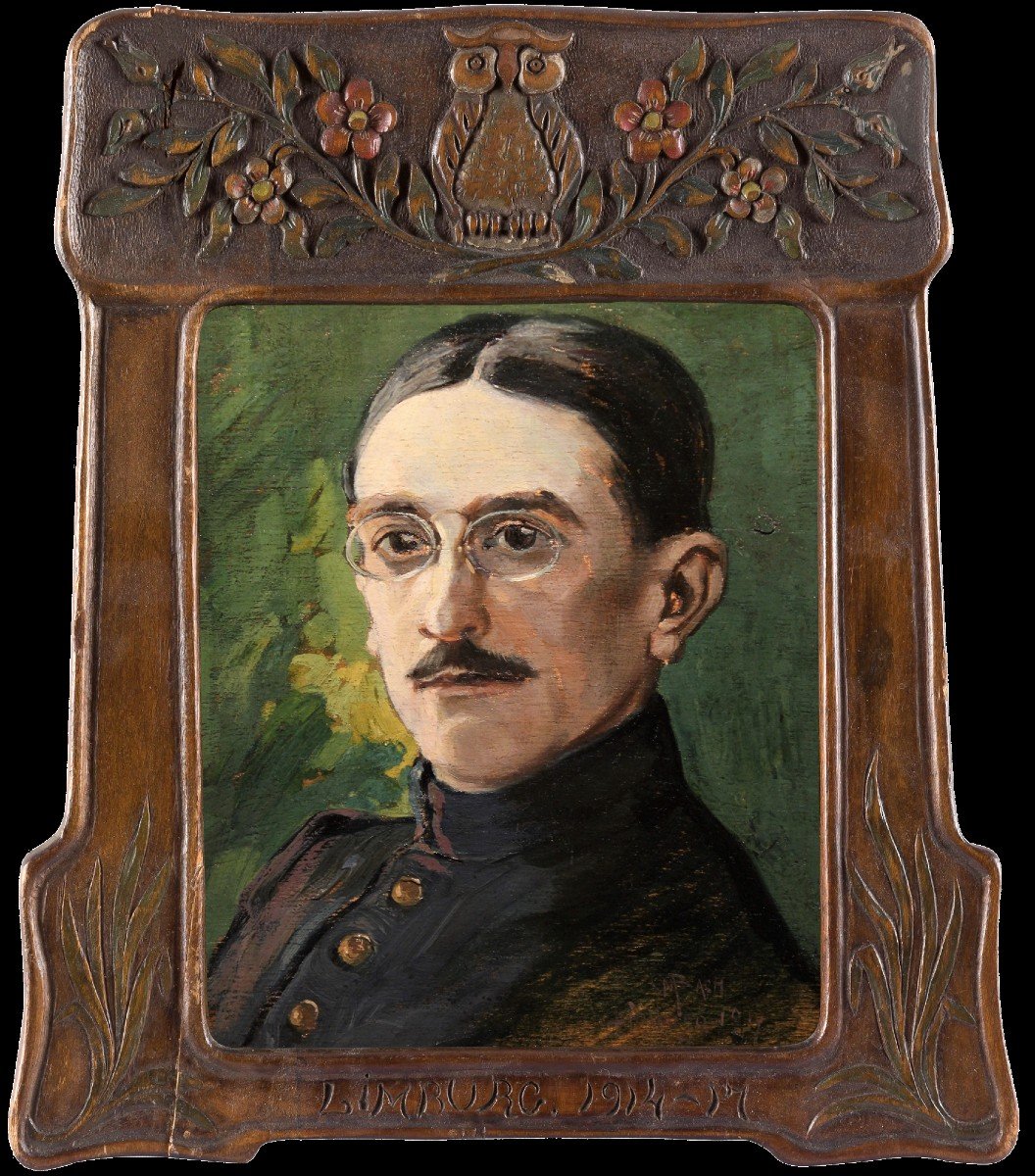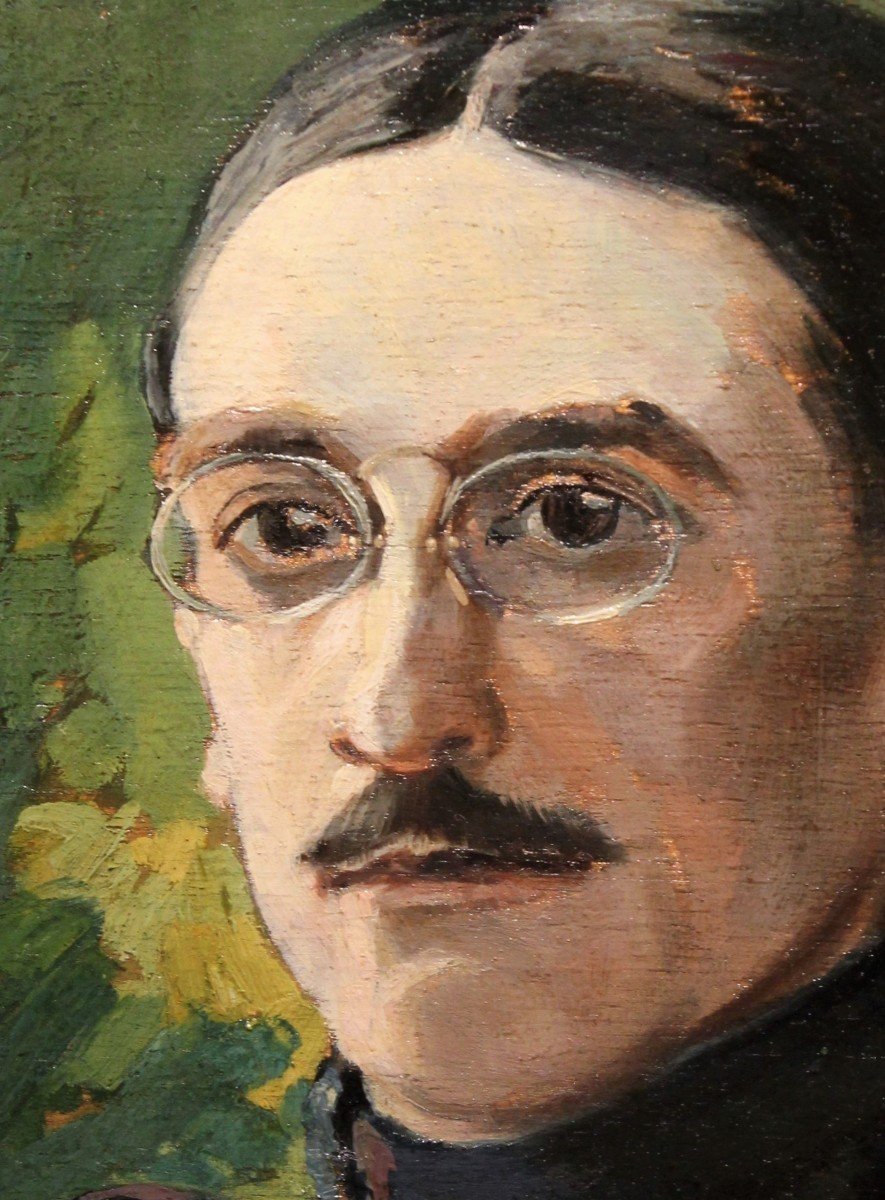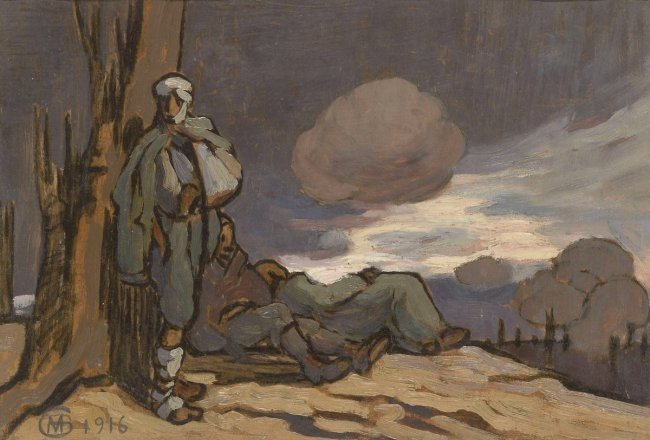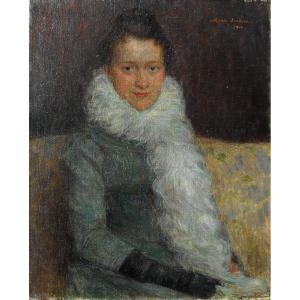(Bordeaux 1879 – Bordeaux 1950)
Self-portrait in captivity
Oil on panel
H. 29 cm; L. 25 cm
Signed, located and dated lower right – Limburg 1917
Frame sculpted by the artist
A painter from the south-west, Marcel Bach produced works in the tradition of the Barbizon school in his artistic youth. His training took place at the Ecole des Beaux-Arts in Bordeaux and then in Paris with Fernand Cormon. Little by little his style evolves towards a more instinctive, livelier layout, opting for an outline of forms in the style of cloisonnism. This evolution is felt around 1905 in his landscapes and his still lifes which thus obtain more material. From 1906, the Bernheim Gallery exhibited some of his works. During the Great War, he went to the front and brought back many moving and charged works. In particular, he was taken prisoner from September 1916. Several of his works can be seen at the Versailles War Museum. His work was exhibited at the Salon des Indépendants from 1908 to 1932, as well as at the Salon d'Automne or the Tuileries. Influenced by the art of Cézanne, whose works he regularly encounters at Ambroise Vollard or at the Louvre, his compositions tend towards a compartmentalization in color gradients. In the 1930s he returned to Bordeaux and headed the set design workshop at the Grand Théâtre. He is obviously a member of the Independent Artists of Bordeaux and exhibits regularly. Owner of a house in Marcilhac sur Célé in the Lot, many warm landscapes of this department make up his corpus. At the end of the 1940s, the artist took a radical turn in his art and pushed his works towards abstraction. An abstraction worthy of interest, in pastel tones where it retains its touch. A part of the work to rediscover. Marcel Bach represents himself in this self-portrait with his uniform and his pince-nez firmly in place. The pose looks relaxed as he is seated and situated in front of a green landscape. Obviously the image is certainly misleading since he painted himself in captivity during the year 1917. His military record indicates an incorporation in August 1914, a change of regiment for the 344th infantry in January 1915 sends him to Amiens where he will be taken prisoner on September 3, 1916. The Ministry of War tells us that he was internment at Wahn at the beginning of 1917. However, the frame made by the artist and his signature show us that he was transferred to the Limburg camp located a hundred kilometers away, between Cologne and Frankfurt. He will be repatriated to France after the armistice, in December 1918. It is therefore within this last camp of prisoners of war that he can realize this touching self-portrait. Not only a painter, Marcel Bach also devoted himself to sculpture during his captivity. Here, the setting totally inspired by Art Nouveau, still in vogue, is a mixture of plants. The lower part again locates the place of realization and the period, surrounded by reeds. The high pediment shows us an owl, framed by flowering branches of a rosebush.




































 Le Magazine de PROANTIC
Le Magazine de PROANTIC TRÉSORS Magazine
TRÉSORS Magazine Rivista Artiquariato
Rivista Artiquariato